Meet OPAL. (No, it’s not the crazy lady down the street!)

I knew an Opal in my hometown – 60+ years ago. Nice lady, as I recall. As were most ladies in my little hometown of 800.
I also knew a Doris – but he was my girlfriend’s father. Small towns come with some weirdness – but I digress.
Today, I met a different OPAL and I want to introduce her it to you.
This OPAL is Optimal Physical Activity for Longevity.
An article hit my Medium.com feed today entitled “How Much Exercise is Optimal for Longevity.” (see it here). The author, Gunter De Winter describes himself as “Biologist. Philosopher. Voracious consumer of ideas. Word wrangler & concept cuddler.”
I like the topic Gunter chose to “cuddle.” Any article with longevity in the title catches my eye since I’m still refusing to relinquish this nutty goal of living to 112 1/2. (I know, I know – snowball’s chance – – – -).
What if I don’t care about longevity?
I get it. A surprising percentage of people are repulsed by the idea of even living to 100. I sense I haven’t deepened any relationships amongst my closest cohort by declaring my outrageous goal. I’ve found it to be a marvelous tool to shorten a boring dinner engagement.
According to a research project done by Dr. Ken Dychtwald of the AgeWave organization and published in his recent book “What Retirees Want: A Holistic View of Life’s Third Age,” (affiliate link) only 22% of respondents said they want to live to 100 or beyond. Among those over 65 and older, twice as many said no (35%) as yes (17%).
If you are in the 78% or 35%, the rest of this will be painful, so an exit is totally understood. I appreciate that you clicked on.
There’s bad news – and then there’s bad news!
The first layer of bad news is that the public health guideline recommendation of at least 150–300 minutes of PA [physical activity] at moderate aerobic intensity or 75–150 minutes at vigorous intensity per week is woefully short of doing anything to enhance longevity. Much more engagement in PA is necessary to achieve maximal benefits on longevity. Cap that with the fact that less than 25% of the U.S. population even achieve this moderate intensity.
The second layer of bad news is that the O-P-A-L is a real butt-kicker that, based on the general attitude toward health and longevity in our culture, isn’t likely to get much of a nod, let alone an attempt.
Based on cohort studies, researchers suggest . . .
…maximal longevity gains at about 700 min of moderate or 350 min of vigorous PA per week.
Ouch! You’ve already done the math, right?
700/7.
350/7
100 minutes/day; 50 minutes/day.
Even freakier if you felt you could maybe find 5 days in the week for O-P-A-L. Either is a stretch for all but the truly committed.
Put down that voice-activated remote and slowly back away!
Don’t decisions get pretty basic with this type of information? As in back-to-back-to-back Ozark, Breaking Bad, and The Crown vs five extra years of healthy living?
Or two pops leading up to a meatloaf and gravy dinner.
Or selling out to the boss with an extra hour at the desk at the end of the day while your workout bag languishes in your car.
Or – well, you get the point.
As a culture (I’m talking mainly U.S. but also most western, supposedly “developed” cultures), we’re still given to “living too short and dying too long.’
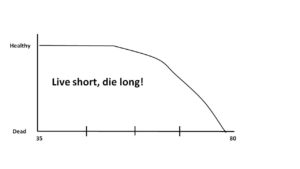
We’re not very good at paying attention to the antidotes.
O-P-A-L is an antidote with a capital “A.”
How about more life in your years!
I understand if longevity isn’t your thing. I understand the impressions that have been seated in your head of walkers, wheelchairs, oxygen bottles, needles, and nurses.
But what if you adopted O-P-A-L for another reason. Rather than more years in your life, put more life into the years you have.
The accelerating slope doesn’t have to be that severe. It could look more like this –
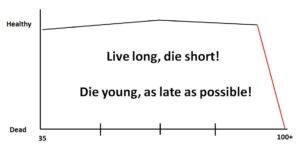
-with more life in your years.
I hear you saying: “OK, loudmouth. How do you measure up?”
Kinda, sorta.
If you’ve tracked with me for a while, you know I’m a fan and advocate of “Harry’s Rules”, the appendix in the book “Younger Next Year” (affiliate link) that was written by the co-author, the late Dr. Henry Lodge.
Here’s a refresher in case you haven’t yet invested in the book:
Harry’s Rules
Exercise six days a week for the rest of your life.
Do serious aerobic exercise four days a week for the rest of your life.
Do serious strength training, with weights, two days a week for the rest of your life.
Spend less than you make.
Quit eating crap!
Care.
Connect and commit.
I’ve been coming pretty darn close to Dr. Lodge’s rules for the last 10-12 years. The pandemic screwed that up for a while, but I’m back on track at 24-Hour Fitness 3 days a week for 90-minute sessions that include aggressive strength training (alternating between free weights and machines and working all the muscle groups across the week) plus 30 minutes of aerobic exercise. I supplement the rest of the week with aerobic (walking, treadmill, elliptical) for 30 minutes (on a good day).
Yep, falling a bit short of the O-P-A-L total, but, c-mon, not bad for a guy just 5 months short of stepping into his 9th decade.
Can I get to O-P-A-L? Sure. It’s just attitude and a decision.
- Plus overcoming temptations.
- Plus overcoming inherent laziness.
- Plus overcoming Netflix and loyalty to the Denver Nuggets or a crappy Broncos team.
- Plus overcoming soreness and discomfort.
- Plus overcoming a shallow commitment to prioritized planning.
Yeah, falling a bit short because that’s a tough list. But we all have a list of things to overcome.
#5 is the difference-maker.
Sorry, dear reader, but anything even close to O-P-A-L ain’t gonna happen unless it’s in writing on your calendar and seated firmly into your habit patterns.
As James Clear reminds us in his runaway best-selling and life-changing book “Atomic Habits”:
“The punch line is clear: people who make a specific plan for when and where they will perform a new habit are more likely to follow through. Too many people try to change their habits without these basic details figured out. Many people think they lack motivation when what they really lack is clarity.”
Albeit tough, O-P-A-L makes it clear.
It helps to remember that nothing significant happens in the comfort zone.
Does anyone out there come close to O-P-A-L? What’s your routine? What’s working best for you? I’d love to have you share your method with the tribe. Leave a comment below. Thanks for reading. If you haven’t joined our group, jump on my email list at www.makeagingwork.com to receive my weekly post. I’ll send you a free ebook entitled “Achieving Your Full-life Potential.”





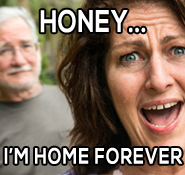

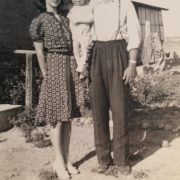
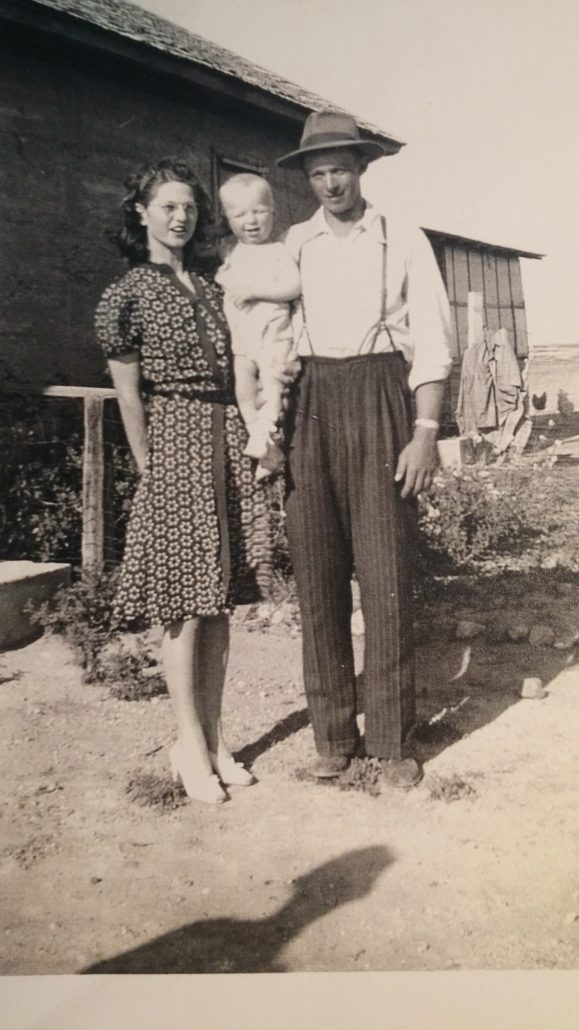



 I was impressed – and somewhat blown away.
I was impressed – and somewhat blown away.